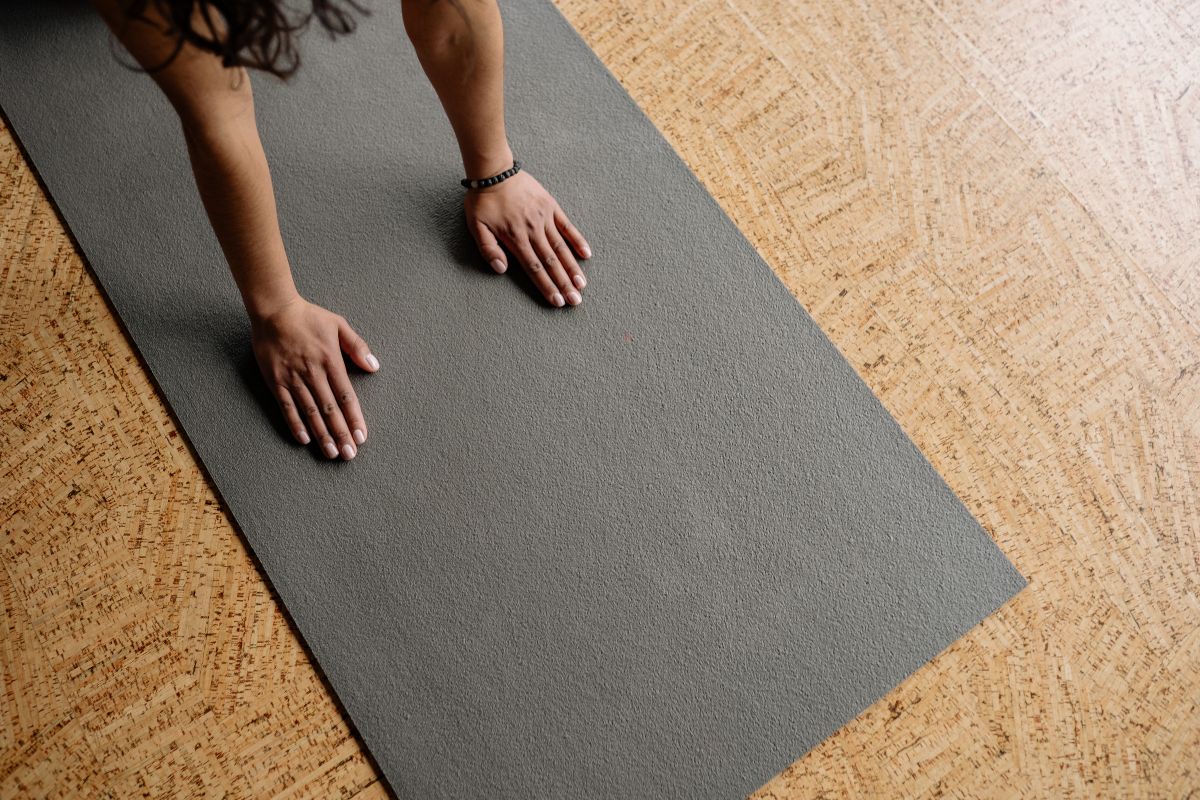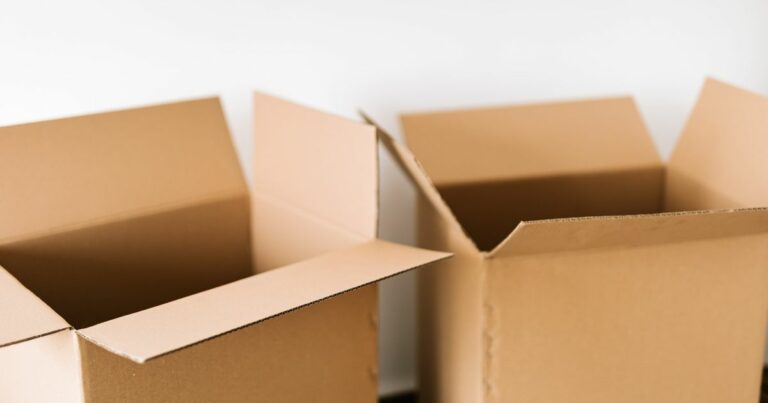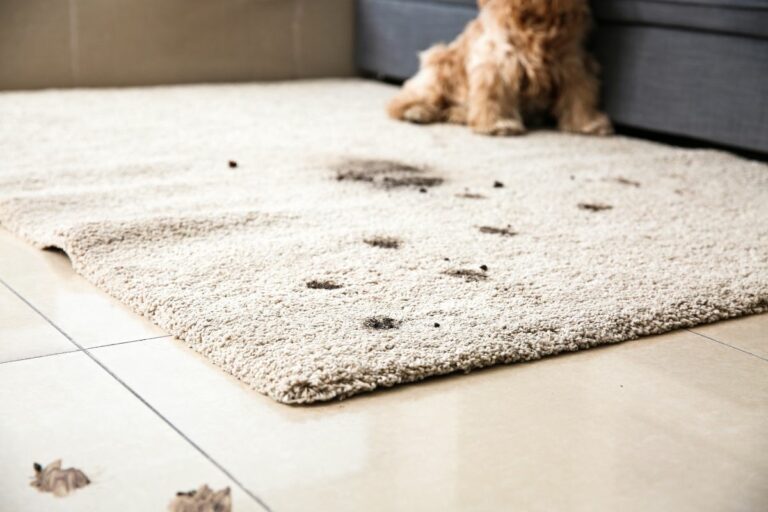Effective Ways to Remove Yoga Mat Smell: Tips for a Fresh Practice

Are you tired of that funky yoga mat smell lingering around your practice space? We know that dealing with stinky mats can damage your zen moments. Fret not; we have practical solutions to eliminate unpleasant odors and maintain a clean carpet throughout your yoga journey.
In this post, we’ll dive into simple and easy-to-follow techniques to keep your mat smelling fresh, using ingredients like white vinegar, witch hazel, tea tree oil, and more. These tried and tested methods will eliminate pesky smells and help you maintain a more hygienic and inviting space for your daily practice.
Please keep reading to explore various ways of removing yoga mat smells and tips for preventing them in the first place. So, prepare to say goodbye to any unwelcome odors and hello to a more enjoyable, refreshing yoga experience!
In this article..
- Understanding The Causes Of Yoga Mat Smells: Why Does Your Mat Smell In The First Place?
- Simple Hacks For Removing Yoga Mat Smell Using Household Items
- Homemade Yoga Mat Sprays: Blends You Can Easily Make At Home To Keep Your Mat Fresh And Clean Longer.
- Yoga Mat Maintenance Tips For Preventing Smells From Occurring.
- How To Properly Store Your Yoga Mat To Prevent Bacteria Growth And Prolong Its Lifespan.
- When to Replace Your Yoga Mat: Signs to Look Out For and How to Properly Dispose of It.
Understanding The Causes Of Yoga Mat Smells: Why Does Your Mat Smell In The First Place?
Your yoga mat can smell due to a variety of reasons. PVC, the most common material used for yoga mats, can emit an odor, and excessive sweat or bacteria can also contribute to the smell. If your carpet smells from work, you must clean it immediately.
To tackle the problem of a stinky yoga mat, there are several solutions you can try. Here are a few options:
- Vinegar is an effective natural cleaning agent that can neutralize odors. Mix equal parts water and white vinegar, then generously apply the solution to your mat and wipe it clean.
- Baking soda is another robust odor absorber. Sprinkle some on your mat, let it sit for 30 minutes, and then vacuum it up.
- Some yoga mat cleaners are specifically formulated to combat odors. Read the labels and choose one appropriate for your mat’s material.
With some care and upkeep, you can say goodbye to a smelly yoga mat for good! It’s important to note that keeping your rug clean and dry can also prevent odors from developing. Air out your carpet after each use, and avoid leaving it in a damp or humid environment.
The dangers of using chemical cleaners on your yoga mat: why natural solutions are a better option.
Answering the question “How to remove the yoga mat smell?” using chemical cleaners can be dangerous. Harsh chemicals can damage your mat and irritate your skin.
Instead of using chemical cleaners, natural solutions are a better option. These non-toxic alternatives are gentle on your carpet, effectively cleaning it without causing any harm.
DIY yoga mat cleaners can be made using simple and natural ingredients such as witch hazel, essential oils, white vinegar, tea tree oil, hydrogen peroxide, and Castile soap. These ingredients are effective in removing smells and have other benefits for your yoga practice.
For instance, tea tree oil has antibacterial properties that can help kill germs on your mat, while essential oils can provide a pleasant smell and boost your mood.
Apart from being safer for you and your yoga mat, natural solutions are also more cost-effective in the long run. Chemical cleaners can be costly and require frequent use to achieve desired results.
On the other hand, natural solutions can be made using items commonly found in your kitchen or bathroom, making them a cheaper and more sustainable option.
Simple Hacks For Removing Yoga Mat Smell Using Household Items
Simple hacks for removing the yoga mat smell using household items you likely have in your kitchen can be easy and effective. Use white vinegar, witch hazel, or mild soap to refresh your mat and eliminate odors.
White vinegar is a versatile cleaning agent that can help remove lingering smells from your yoga mat. Here’s how to use it:
- Mix white vinegar with water at a 1-to-4 ratio in a spray bottle.
- Shake the bottle slightly to combine the solution.
- Optionally, add a few drops of tea tree oil or your favorite essential oil for an added scent.
- Spray the solution evenly onto the mat.
- Wipe it down with a clean, soft cloth.
Witch hazel is another great option for removing the yoga mat smell. Follow these steps to use this method:
- Pour witch hazel directly onto the mat, covering the entire surface.
- This will help eliminate the new-mat smell and replace it with a pleasant aroma.
- Allow the witch hazel to sit on the mat for a few minutes.
- Wipe the mat clean using a damp cloth.
Try a mild soap if your mat is still smelly after using vinegar or witch hazel. Here’s how:
- Mix a few drops of mild soap with water in a spray bottle.
- Spray the solution onto the mat, covering its entire surface.
- Using a damp cloth or sponge, gently scrub the mat.
- Rinse the mat with clean water and pat dry with a towel.
Homemade Yoga Mat Sprays: Blends You Can Easily Make At Home To Keep Your Mat Fresh And Clean Longer.
Homemade yoga mat sprays are an excellent way to keep your yoga mat clean and fresh. You can easily make your yoga mat spray using natural ingredients for your skin and the environment.
A straightforward recipe involves mixing witch hazel, lavender essential oil, lemon essential oil, and peppermint essential oil in a spray bottle.
This formula will clean and refresh your yoga mat and add a pleasant scent. You can also use infused witch hazel, water, and essential oils like rosemary, lavender, lemon zest, or peppermint leaves to create your custom blend.
Tea tree oil and lavender essential oil are natural antifungal and antibacterial agents, making them an excellent choice for a DIY yoga mat spray. Adding a few drops of these essential oils to your homemade cleaner will keep your mat smelling fresh and prevent any infections or fungus from spreading.
Homemade yoga mat sprays are an inexpensive and eco-friendly way to keep your yoga mat clean and safe for your practice. Although vinegar or apple cider vinegar can be used as a substitute for witch hazel, they may not be the best option for yoga mat cleaners as they have a strong and pungent odor.
However, they can be easily mixed with essential oils to create a refreshing scent that will help mask the vinegar smell.
In addition to homemade yoga mat sprays, there are a few other things you can do to extend the life and freshness of your yoga mat. These include:
- Clean your mat after each use to remove sweat and bacteria that can cause unpleasant odors and shorten lifespan.
- Avoid keeping your mat in hot, damp environments like your car or a sunny window as this can cause mildew and mold growth.
- Allow your mat to dry thoroughly before rolling or storing it to prevent moisture buildup.
- Use a towel or yoga mat towel to absorb sweat and moisture during your practice. This will keep your mat clean and prevent slipping and injuries.
Combining these tips with homemade yoga mat sprays lets you keep your yoga mat fresh, clean, and safe for all your yoga sessions.
Yoga Mat Maintenance Tips For Preventing Smells From Occurring.
Yoga mat maintenance is essential to keep unpleasant smells away. Regular cleaning with natural solutions like vinegar or witch hazel mixed with water can prevent bacteria growth.
Wiping the mat after each use can also help remove sweat and bacteria that might cause smells. Dry the carpet entirely before rolling and storing it to avoid mold growth.
To prevent smells from occurring on your yoga mat, here are some tips to follow:
- Clean your mat regularly: Use natural solutions like white vinegar, apple cider vinegar, or witch hazel mixed with water to clean your carpet. Avoid using harsh chemicals or oils that can damage the mat.
- Wipe down the mat after each use: A sweaty yoga session can leave bacteria on your carpet, which can cause unpleasant smells. Wipe the mat with a clean towel to remove bacteria after each use.
- Let the mat air dry completely: Moisture can lead to mold and mildew growth, causing unpleasant smells. Let your mat dry completely before rolling it up and storing it away.
- Use a mat towel: If you sweat a lot during your yoga session, consider using a mat towel. This can absorb the sweat and prevent bacteria from building up on the mat.
- Store your mat correctly: Make sure to store your mat in a cool, dry place. Avoid storing it in a damp or humid area, as this can promote bacteria and mold growth.
How To Properly Store Your Yoga Mat To Prevent Bacteria Growth And Prolong Its Lifespan.
To properly store your yoga mat and prevent bacteria growth, ensure it is clean and scorched before putting it away. Now, let’s dive deeper into prolonging your yoga mat’s lifespan.
Drying your yoga mat:
- Hang it over a shower rod or lay it flat on a clean surface.
- Make sure the area is well-ventilated to speed up the drying process.
Storing your yoga mat:
- Keep it away from direct sunlight and extreme temperatures to avoid damage.
- Roll the mat loosely with the top side facing outwards. This prevents creases and cracks.
Following these simple steps, you can keep your yoga mat bacteria-free and extend its lifespan. This protects your health and ensures an enjoyable and comfortable yoga practice every time.
When to Replace Your Yoga Mat: Signs to Look Out For and How to Properly Dispose of It.
Replace your yoga mat when you notice signs of wear, such as bald spots or thinning. Typically, this occurs every 12 to 24 months, depending on usage and mat quality. To dispose of the old mat, recycle or repurpose it.
There are several signs to watch for indicating that your yoga mat needs replacing:
- Bald spots: When the areas where your hands and feet frequently rest show significant wear, it’s time to replace the mat. This can cause slipping and reduce grip during poses, leading to potential injuries or strain.
- Thinning: A good yoga mat should be at least 1/4 inch thick. If it has become thinner over time, it may need to provide more cushioning and support when practicing poses, especially on hard surfaces.
- Material breakdown: Certain materials, like PVC or TPE, can break down over time, making the mat less durable and prone to tearing.
When the time comes to dispose of or replace your old yoga mat, consider the following options:
- Recycling: Some recycling centers accept yoga mats made of specific materials like PVC and TPE. Check with local recycling programs to see if they get these items.
- Repurposing: Give your old mat new life by using it as a non-slip surface under rugs, as knee pads for gardening, or cut into smaller pieces to create coasters or pet cushions.
By adequately identifying signs of wear and tear on your yoga mat and disposing of it in an environmentally friendly manner, you can ensure you get the most out of your carpet while keeping safety and sustainability in mind.









